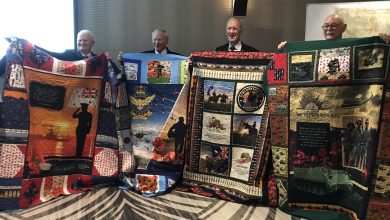Council is working with Hawkesbury River County Council (HRCC) to better coordinate weed management strategies in our region.
As part of this, Council and HRCC staff – plus our many valued Bushcare volunteers – are becoming the first line of defence against many noxious weeds in our area, for example Blackberry, Green Cestrum and Cat’s Claw Creeper. Keeping Bushcare volunteers and the community informed, Council’s Bushcare newsletter, Weed All About It, highlights weed issues and details the work of volunteers who are helping to reduce weeds in the Hawkesbury.
HRCC recently had a stall at the 2016 Planet Ark National Tree Day plant giveaway at the Hawkesbury Community Nursery to encourage people to learn more about weeds.
According to HRCC Operations Manager Christopher Stanfield, a noxious weed is a weed that has been designated by an agricultural authority, in this case NSW Department of Primary Industries, as one that is injurious to agricultural or horticultural crops, natural habitats or ecosystems, humans or livestock.
“Noxious weeds are usually plants that multiply easily and quickly and grow quite aggressively,” Mr Stanfield said.
“The control of such weeds depends on the type of weed, the environment, topography, vegetation type and the soil structure.”
For a weed to be declared noxious, a number of criteria must be met. It must have the potential to cause harm to people or livestock, it must be able to be controlled by reasonable means, it must have the potential to spread within an area and to new areas, and the control of a weed must provide a benefit to the community over and above the cost of implementing the control program.
Maintaining control of noxious weeds is important for the health of native habitats, livestock, wildlife, native plant communities and humans, as some noxious weeds can also cause adverse effects through contact or ingestion – as some weeds have toxic properties.
Noxious weeds have been introduced into the landscape in various ways including through contaminated feed and crop seeds, by escaping from domestic gardens or by being spread by humans, birds and other animals.
The weeds then negatively affect agriculture, human health, animal health, bushland, waterways, parks, nature reserves and other open spaces.
Native habitat and plant community restoration projects can also help prevent weed invasion and ultimately lead to the eradication of weeds. For more information about noxious weeds, visit https://hrcc.nsw.gov.au.
You can also visit https://weeds.dpi.nsw.gov.au to check out WeedWise which contains over 300 noxious and environmental weeds, with information about weed control and the Noxious Weeds Act (1993). To join a
Hawkesbury Bushcare group and help with weed control and bushland regeneration, or to subscribe to the Bushcare newsletter, contact Council’s Community Bushcare Officer on (02) 4560 4525.










